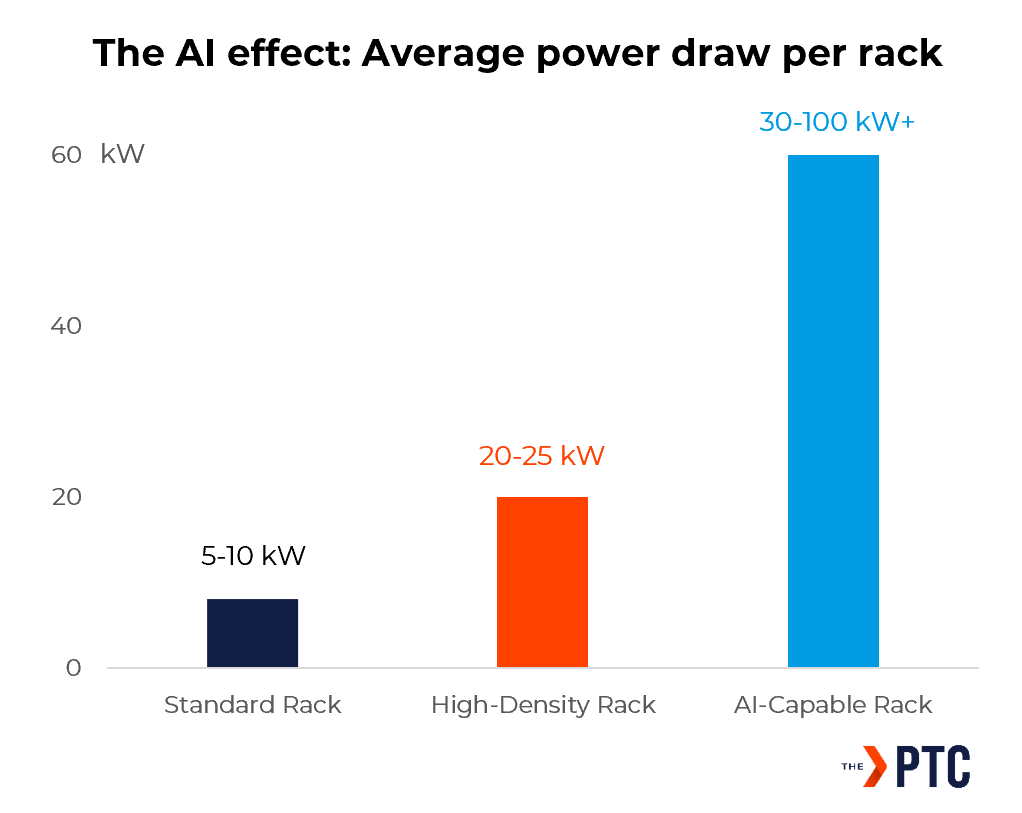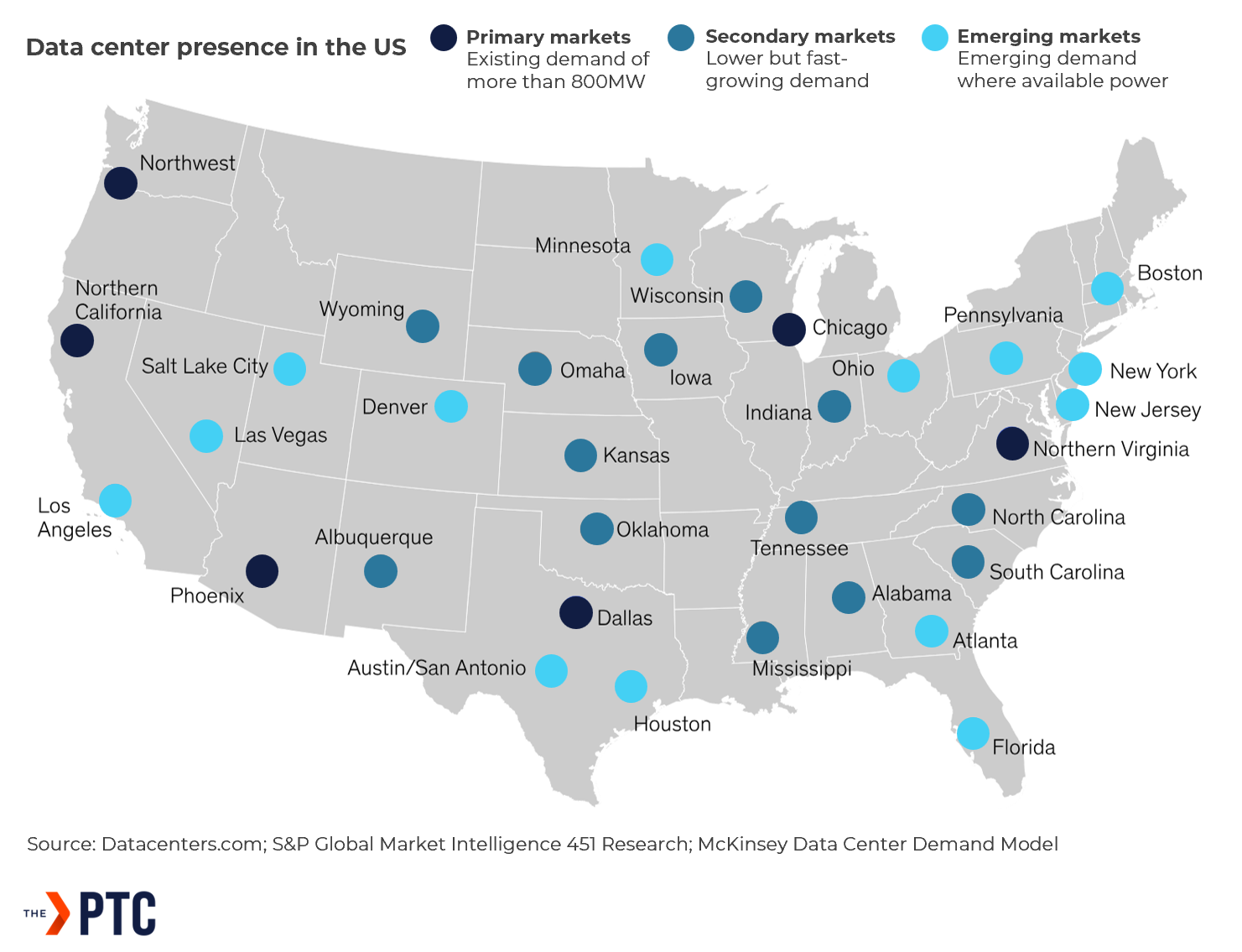The PTC
2
min read
Published on
September 2, 2025
August 28, 2025

As artificial intelligence moves from experimentation intoeveryday application, it is placing new and urgent demands on theinfrastructure that supports it. The traditional data center model, which designedfor general-purpose cloud storage and network uptime, is being reshaped into ahigh-performance engine built for AI-first workloads. This shift is drivingprofound change across design, location strategy, and capital investment.
Unlike standard cloud computing, AI workloads requiresignificant compute power, driven by specialized GPUs operating at far higherdensities. These clusters generate more heat, draw substantially more power,and often exceed the limits of traditional air-cooling systems. As a result, weare seeing the rapid adoption of liquid and immersion cooling, along witharchitectural changes that accommodate taller rack configurations and tighterthermal zoning.

This technical shift is influencing where data centers arebuilt and how quickly they can scale. Location decisions are now increasinglyguided by the availability of grid power, proximity to renewable energy, andlow-latency access to user populations.
In parallel, many operators are seeking regulatoryenvironments that enable accelerated permitting and infrastructure expansion.Emerging “AI corridors” are appearing in Tier 2 cities and suburban edgelocations, which offer the right mix of energy resilience, connectivity, andlong-term growth capacity.

Design is also being reimagined at the core. Developers arenow integrating flexible power provisioning, modular construction, and smartbuilding systems capable of monitoring and optimizing AI-specific workloads.These facilities are not just bigger. They are built smarter, withfuture-proofing baked in from day one.
This evolution is not going unnoticed by investors. Capitalis now flowing toward facilities with AI-ready infrastructure, where power,cooling, and scalability are already addressed. Real estate investment trusts(REITs), infrastructure funds, and hyperscale cloud providers are forging newpartnerships to secure long-term access to these next-generation assets. Inthis environment, being AI-capable is not a niche advantage—it is adifferentiator that directly impacts valuation and access to capital.

Artificial intelligence is not only transforming how weprocess and interact with data—it is redefining the built environment behindit. As we move from a cloud-centric model to an AI-powered clusterarchitecture, the winners will be those who understand both the technical andreal estate implications.
Tomorrow’s data centers will not just be places tostore information, but strategic assets that enable compute-driven valuecreation at scale.
.jpeg)





.jpg)
.jpg)
.webp)
.jpg)
.jpeg)


.png)
.png)

.jpg)

.jpeg)
.jpeg)

.jpeg)
.jpg)
.jpg)
.png)

.jpg)
.jpeg)
.jpeg)
.jpeg)
.jpeg)

.jpeg)





.jpeg)

.jpg)
.jpeg)
.jpg)

.png)
.jpeg)



.jpg)


.jpeg)
.png)


.jpg)
.png)

.png)
.png)
.jpg)
.jpg)
.jpg)
.png)
.webp)
.png)
.jpg)
.jpg)
.jpg)
.jpg)
.jpg)
.png)
.png)
.jpeg)
.jpeg)
.jpeg)
.jpg)
.jpg)
.jpeg)
.jpeg)
.png)
.jpeg)
.jpg)

.jpeg)

.jpeg)